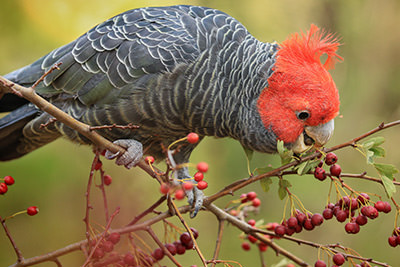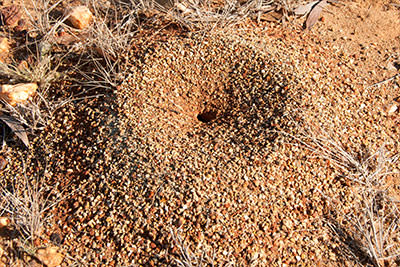LEARNING ACTIVITY
STORY
Adam is a Wiradjuri man living on Ngunnawal land, so these perspectives are a mix of both of these local areas. Jarrah had a question for Adam and was looking forward to going for a walk with him in the bush on Wiradjuri Country. Jarrah asked “It’s Autumn at the moment but the leaves aren’t turning red and falling off the trees. Why?”
Adam replied “the plants in Australia don’t do that, we have different plants, animals and weather. The idea of four seasons comes from places in the Northern hemisphere like Europe where the plants lose their leaves in Autumn. We don’t have four seasons in Australia. We even have different seasons all over the country. First Nations Peoples have always known what the different seasons are by observing the changes in the weather, the sky during the day and night. They also know what happens to the plants and animals at different times of the year.” Jarrah was really interested in what Adam had to say. “Wow! That’s amazing, can you tell me more?” asked Jarrah.

Australia is a large country with different climates (such as temperate, tropical and arid). The Northern Hemisphere model of the four seasons (Summer, Autumn, Winter, Spring) does not fit with Australia’s different climatic regions.
First Nations peoples across Australia have a detailed understanding of their environment, passing it down from generation to generation. They observe their environment closely, and use this knowledge to understand the changes in plants, animals and climate. Changes in the environment indicates what to eat, when to eat it, what to do, where to live and when to move. A deep understanding of the environment means survival and the continuation of the resources used for future generations.
Traditional stories have an importance for First Nations peoples in sharing how to live with the changing of seasons.
For children to:
- observe daily changes in weather and the environment using their senses
- explore how First Nations peoples are aware of the changing seasons through observing the weather, plants and animals explore local First Nations peoples seasons through Jarrah’s story to create a local seasons journal.
This activity can be done at any time of the year.
Introduction
This activity introduces children to going outside and experiencing the seasons.
First Nations people observe the seasons change and they know when it is best to collect food such as fruits or seeds, what type of shelter they would need to make, what clothing they would need to keep warm and when to move from one place to another.
To understand local stories and support these activities, we recommend reaching out to your local Traditional Owners and First Nations peoples community groups, who can assist in knowledge sharing and understanding local land, histories and culture.
Checklist
Instructions
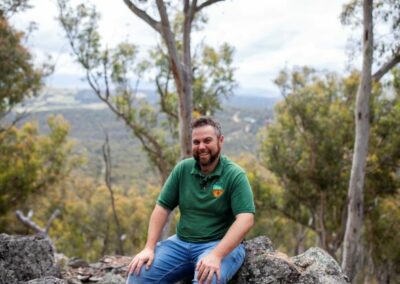
STEP 1
Begin with an Acknowledgement of Country.
Complete the Whose Country are you on? learning activity to determine your local First Nations peoples language group.
Acknowledgment – We would like to say thank you to the First Nations peoples (refer to your local group if you know it) who have cared for and continue to care for this Land we are on for thousands of years. We promise that we are going to care for the Land and all of the plants and animals that live in it.
Conduct a discussion on seasons and what the children know.
Ask the children what they know about seasons. What is the temperature like outside for each season? Is it hot, cold or in the middle?
How many seasons are there? Is it just four, or are there more?
Following your discussion, find a place outside to sit away from others. Use all your senses to observe what is around you for 10 minutes.
Even in an urban area, look for native species you might observe such as insects, birds and plant growth or development.

STEP 2
Use the journal page of the activity sheet to record your observations by writing or drawing.
What do you see? Is it sunny? Is it cloudy? What are the clouds like? Are they moving fast or slow? What are the birds and animals doing?
What do you feel? Is it cold or is it hot? Can you feel the wind? Can you feel the warmth of the sun?
What do you hear? Can you hear the wind? Can you hear birds? Can you hear any insects? What are they doing? What other noises can you hear?
What can you smell? Flowers? Rain? The earth?
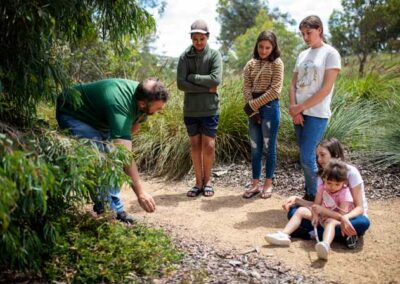
STEP 3
Encourage discussion by retelling the seasons story from Adam and Jarrah in the activity sheet. These seasons include: first summer, deep summer, first winter, deep winter, first spring, deep spring.
Explain that in the story Jarrah was on a walk with Adam and as he learnt about the seasons, Jarrah wrote it down and drew pictures.
Ask the children to use their observations and discuss what season they are in.
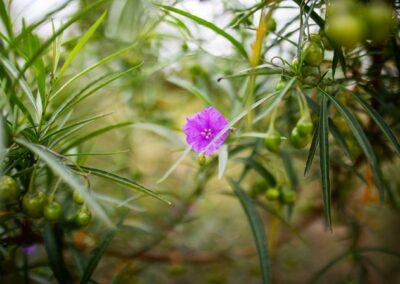
STEP 4
Using the My Seasonal observations page of the activity sheet, draw or write about at least one thing you observe locally. Look at the animals, plants and weather to help describe the season you are in.
You may like to do this activity again at another time during the year to observe the differences.
Extension Activity
Extension 1
Connect with your local First Nations community and invite them to share their knowledge with you.
Extension 2
Use information from the Bureau of Meteorology’s Indigenous Weather Knowledge site and find the Seasonal calendar from the First Nations community closest to you. Select a Language group and open the page showing the seasons for that group. Compare with the seasons in the story. Use with other online resources or books to construct a chart or write a story about the seasons in your area. You may like to use pictures to help.
Extension 3
Share your knowledge and tell a story about how a plant or animal changes through the seasons.
Curriculum and Framework Links
SCIENCE
Year 3: ACSSU044, ACSHE050
Year 4: ACSSU072, ACSHE061
Year 7: ACSSU115, ACSHE121, ACSIS129
HUMANITIES and SOCIAL SCIENCES
Year 3: ACHASSK062, ACHASSK066, ACHASSK068
Year 4: ACHASSI074, ACHASSK083
Year 5: ACHASSK113
GENERAL CAPABILITIES
Critical and Creative Thinking
Personal and Social Capability
Ethical Understanding
Intercultural Understanding
CURRICULUM CONNECTIONS
Outdoor Learning
Food and Fibre
CROSS CURRICULUM PRIORITY
Aboriginal and Torres Straight Islanders Histories and Cultures
Sustainability
MY TIME, OUR PLACE: FRAMEWORK FOR SCHOOL AGE CARE
Outcome 2 and 4
Reference List
ONLINE RESOURCES
Use the Indigenous Weather Knowledge from the Bureau of Meteorology to explore the Indigenous seasons by selecting the language group on the map closest to where you live.
This article from ABC helps us to understand the changing weather through learning about Australia through First Nations peoples knowledge of seasons.
Season wheels showing ecological knowledge from across Northern Australia developed with Indigenous language groups and CSIRO.
Caring for Country (Primary) resource from Narragunnawali provides resource material for all students to build a personal sense of responsibility for respecting and caring for the Country/place around them, all the while building an awareness and appreciation of Aboriginal and Torres Strait Islander contributions to sustainable Land management.
The Gambay – First Languages Map of Aboriginal and Torres Strait Islander languages from First Languages Australia can help locate your local First Nations peoples group as it reflects the names and groupings favoured by community.
WATCH
Learn from Aboriginal and Torres Strait Islander communities across Northern and Western Australia who have helped to develop seasonal calendars in this video from ABC Education (2 minutes).
Watch this Behind the News story, as Elders share stories on Indigenous seasons within a school (3 minutes).
READ
My Home in Kakadu (2005) from Magabala Books, Author: Jane Christophersen, llustrator: Christine Christophersen. This picture book tells the story of Tarrah who lives with her community in Kakadu and the significance of the changing seasons to those who live there.
Grant, Stan & Grant, Stan, 1940-, (compiler.) & Rudder, John, (compiler.) (2010). A new Wiradjuri dictionary. Restoration House, O’Connor, A.C.T. for Wiradjuri language.
NETWORK
We recommend reaching out to the Local Traditional owners and First Nations peoples community groups who can assist in knowledge sharing and understanding local land, language, stories and culture.
To reach out or find contacts in your local First Nations community you could speak to parents of First Nations students, to an Indigenous Learning Officer (ILO) at your school or to a local Land council.
We have some suggested organisations to approach listed on our Junior Landcare Community page and in more detail within our Educator Notes.
Why not try one of our other Junior Landcare learning activities?
Creating an Indigenous plant-use garden: plant list
First Nations Perspectives
Creating an Indigenous plant-use garden: resources from the bush
First Nations Perspectives
Love Letters to the Land
Biodiversity|First Nations Perspectives|Food Production|Waste Management
Creating a yarning circle: involving First Nations people
First Nations Perspectives
